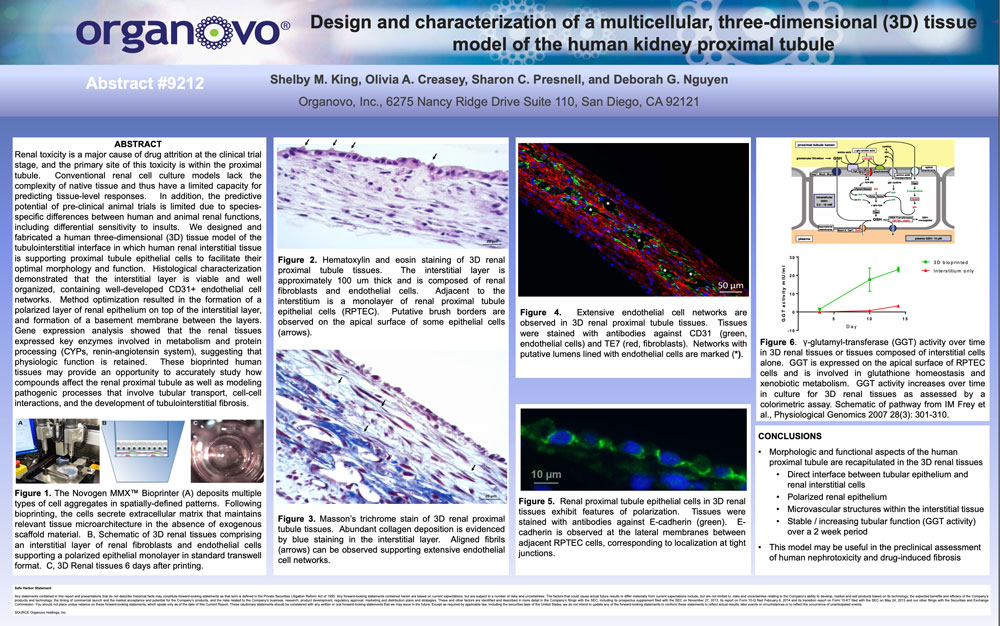Design and characterization of a multicellular, three-dimensional (3D) tissue model of the human kidney proximal tubule
Publication Summary:
Renal toxicity is a major cause of drug attrition at the clinical trial stage, and the primary site of this toxicity is within the proximal tubule. Conventional renal cell culture models lack the complexity of native tissue and thus have a limited capacity for predicting tissue-level responses. In addition, the predictive potential of preclinical animal trials is limited due to species specific differences between human and animal renal functions, including differential sensitivity to insults. We designed and fabricated a human three-dimensional (3D) tissue model of the tubulointerstitial interface in which human renal interstitial tissue is supporting proximal tubule epithelial cells to facilitate their optimal morphology and function. Histological characterization demonstrated that the interstitial layer is viable and well organized, containing well-developed CD31+ endothelial cell networks. Method optimization resulted in the formation of a polarized layer of renal epithelium on top of the interstitial layer, and formation of a basement membrane between the layers. Gene expression analysis showed that the renal tissues expressed key enzymes involved in metabolism and protein processing (CYPs, renin-angiotensin system), suggesting that physiologic function is retained. These bioprinted human tissues may provide an opportunity to accurately study how compounds affect the renal proximal tubule as well as modeling pathogenic processes that involve tubular transport, cell-cell interactions, and the development of tubulointerstitial fibrosis.
View Publication
